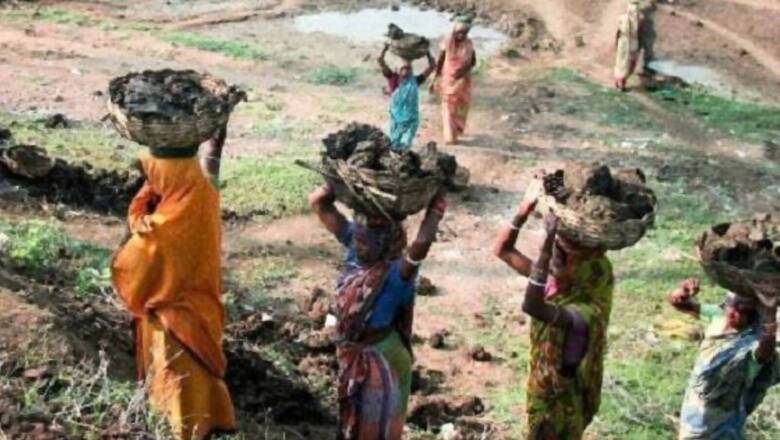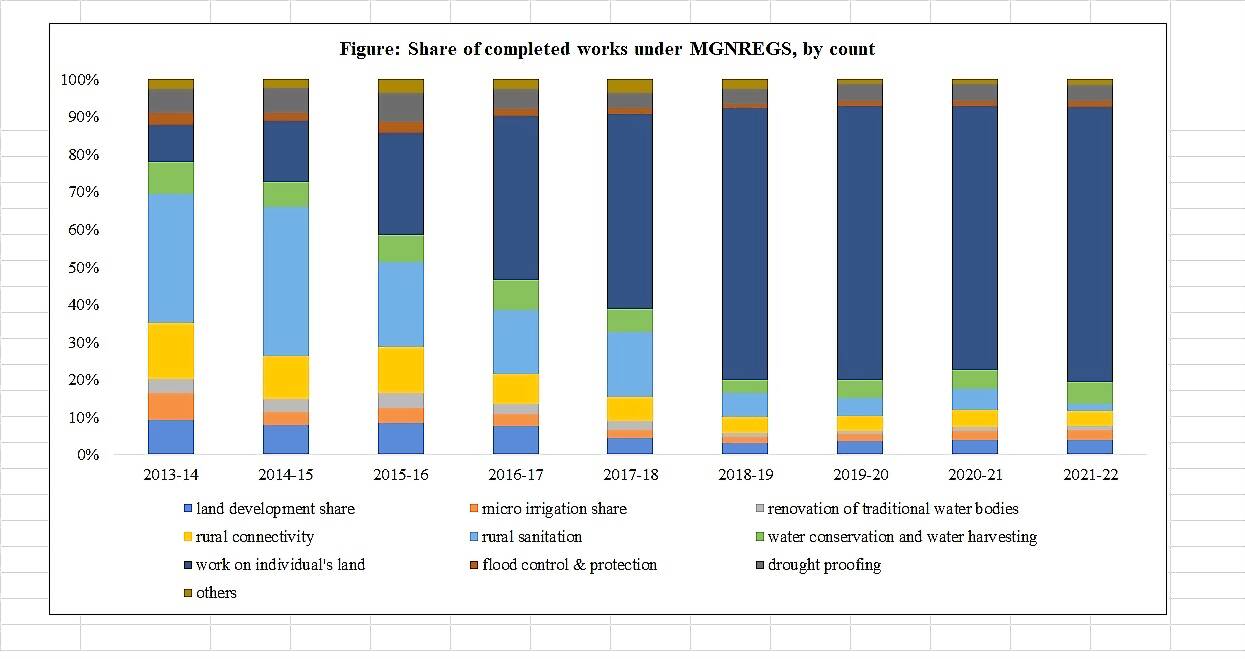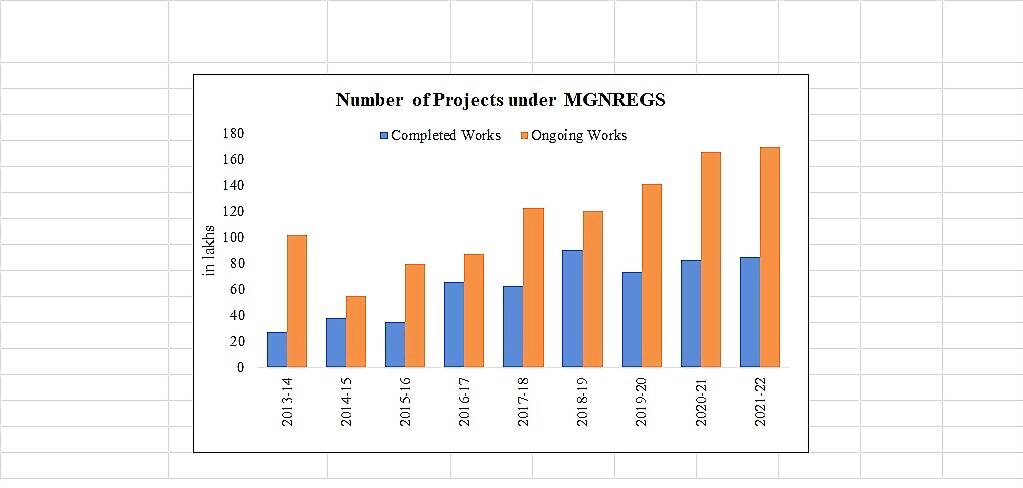
views
A welfare scheme is like an infinite game–you can start it but cannot end it as the objective is not winning but perpetuating. The political fallout of shutting down a scheme is too high. But how long should a government continue to drag a faulty design and keep doling out funds in the name of welfare? The story of Mahatma Gandhi National Rural Employment Guarantee Scheme (MGNREGS) is one of an infinite game that creates a corrupt system that survives on perpetuating the scheme.
The extent of MGNREGS failure is evident from the pile of incomplete projects. The Economic Survey 2023 reveals the macro dynamics of the efficiency and effectiveness of MGNREGS. The data on the incomplete project shows that the money spent on this scheme, over the last many years, rarely translates into assets on the ground. Is half road still a road? Will an incomplete water drain system still be useful, and can a half-finished Panchayat Bhawan be used? An incomplete road in a rural area will either wither away with disuse or, better still, will again be approved as a project.
The lobby that has been lamenting about the lower allocation for MGNREGS in the current budget should be worried about its utilisation. CIPP’s experience with its rural lab in the most backward district of the state of Haryana with the MGNREGS scheme is that it has extended increased corruption to the bottom of the pyramid.

The objective of MGNREGS was to give guaranteed income to the hands of rural landless workers and create assets like irrigation drains, roads, and Panchayat Bhawan. If the MGNREGS project is not designed to create a physical asset, then two challenges arise. One, if no asset is created on the ground, then there is no way a government to audit or ensure that the work that payments have been made to the beneficiaries for labour and material as there is nothing to show on the ground. Second, when there is nothing to show, it means that the system itself has siphoned off both the material and labour costs. This creates a massive amount of corruption at the village level, beginning from the panchayat itself, going upward from the Junior Engineer, ABPO, and sometimes right up to the political or administrative head of the state’s Panchayat department.
This way, MGNREGS ensures and creates corruption at the bottom of the governance and political pyramid–the panchayat level. This corruption at the panchayat level is very visible and clearly evident from the amount of money that candidates are willing to spend to win the Sarpanch elections. This amount has ballooned from a few lakhs ten years back to as high as Rs 50 lakh and Rs 1 crore, depending upon a village’s population. The population of a village along with the number of landless farmers and backward castes determines the spending of the government scheme. Almost every government scheme is now reaching down to the panchayat in the hope that the scrutiny and delivery will be better.
The junior engineer, block panchayat officer, panchayat secretary, and district panchayat officer have now developed well-oiled machinery to siphon off MGNREGS funds. The Central government is aware that corruption is rising and it is trying to plug the leakage of funds using technology. Hence, the department developed a portal specifically for preventing leakage. The portal demands that everything is done electronically, beginning from generating demand at the village level. The sarpanch or the panchayat secretary is supposed to generate demand depending upon the need. But before this, a very crucial exercise is to get a project approved under MGNREGS. This has now become an exercise in futility and is akin to trying to get a Minister of Roads and Surface Transportation (MoRST) to assign a new national highway. The power to sanction a project is based on the total funds allocated to a district by the state government. How these funds are allocated for the district is based on where the chief minister wants to spread the largesse. Anecdotal evidence from states suggests that every CM allots funds based on political requirements instead of the backwardness of the district or its need. This can be easily corrected if the Central government makes a system or formula based on income levels or unemployment in a district. They can also make the data public so that it is known which district is getting how much funding. Even project approval and completion data should be shared at the district level to see the competency of the district in completing projects.
Right now, if the fund is allocated to the district and the district CEO of the panchayat department agrees, a project gets approved for a village. This depends on the persistence and political prowess of the sarpanch.
The next step is sending the demand to the block panchayat officer. This begins with uploading the bank accounts of all the beneficiaries so that the labour costs can be directly sent into their accounts. The Haryana government also wants the Parivar Pehchan Patra, a new document ID for the family, to be uploaded and verified for each beneficiary. This is a task multiplied by the number of beneficiaries and it has to be done every time, as the system does not save or store the list of beneficiaries. Technically, the staff is supposed to do everything from evaluating the project to estimating the cost and preparing a budget. But, in reality, all this work of the junior engineer has to be done by the panchayat. The system at this level feels that doing its job is somebody else’s responsibility. The junior engineer sometimes does not even have the skills.
But as these villagers are not really expected to work on the ground as there is no tangible thing to be created, they are happy to give away a part of the money to the system for being enrolled. Every sarpanch or panchayat creates its own list of beneficiaries that will give thee free money back to them.
This is the free money system that has been created on the ground over the last six years–anywhere between Rs 3 lakh crore and Rs 4.5 lakh crore.

If we see the data on the kind of projects that are being taken up in the last three years of MGNREGS, they are mostly projects on private land. This means that MGNREGS has exhausted or is no longer taking community infrastructure projects.
Hypocrisy of Enterprise
MGNREGS does not acknowledge that taking up any project needs enterprise, agency, and resources. The government does not pay immediately but the material has to be paid immediately. Small suppliers in the village will not wait for six months for the bills to be paid. This means that somebody enterprising enough, steps in and takes responsibility for the project. The ABPO or CEO cannot handle multiple projects directly. Hence in every project, an agent or a contractor is involved. MGNREGS does not acknowledge this contractor. The contractor is crucial as he puts the muster for labourers together, collects them on the site, gets the material from the shop to the location, and pays the supplier for the cement or sand or bricks supplied. All these are tasks that require time, effort, and money. The design of MGNREGS assumes that these tasks do not exist or they will be done by the government official or panchayat. This is unrealistic as the government official does not have the bandwidth and even the sarpanch will not give an advance payment for material or give a payment on behalf of the government. The only one who will give an advance for the material and to the labourers to come on-site is the one who believes that he will be able to get the payment from the government. MGNREGS ignores that there is any private enterprise or efforts made to earn money at the bottom of the pyramid. Because the system software does not acknowledge the presence of a contractor and believes this is a utopian world where resources will be spent on behalf of the government without expecting any return. The system is broken and it changes everything about the project from execution, to design, and completion.

If for any other project, the system acknowledged the presence of the contractor, in fact, did a tender for allocating the project to the lowest bidder, it would have one single person or organisation responsible for the project. If the project was treated as any other project, the cost of it would be standardized as per PWD standards. Currently, there is no standard followed by a water drain project that can be designed for 4 lakhs or 40 lakhs.
The biggest change that the MGNREGS project can do is to acknowledge private enterprise in the execution of the project. Make a standardised budget for quality and time and ensure that the contractors are compensated to create it. Judge the project on quality and not on the fact that the labour cost has been transferred. Currently, a project is seen to be complete if the labour cost is sent to the beneficiary account. The material cost is sent much later and if that is also sent, then the project is closed on the software or the system. If MNREGS is not overhauled it would continue to corrupt the system at village, block and district level, whereas it can genuinely create jobs and entrepreneurship at that level.
K Yatish Rajawat is a public policy researcher and works at the Gurgaon-based think and do tank Centre for Innovation in Public Policy (CIPP). Views expressed are personal.
Read all the Latest Opinions here

















Comments
0 comment